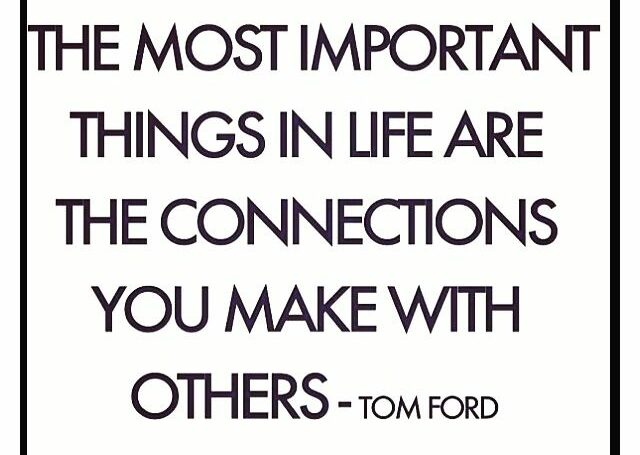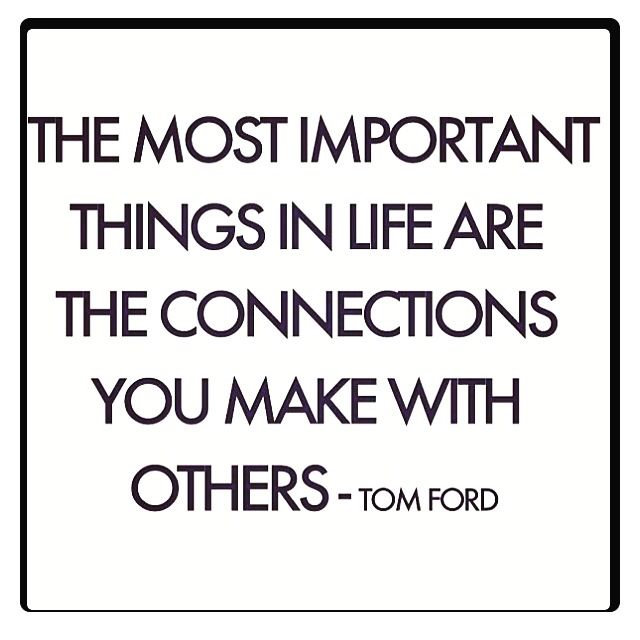
Secret to Happiness
My father knew the secret to happiness
Oh, how he used to embarrass me! He talked to EVERYONE!
My father intuitively knew that the secret to happiness was human connection. He talked to STRANGERS wherever he went.
Have you noticed a change in your sense of connection with others? Have you found machines where you used to enjoy interacting with humans? Do you get sucked in to social media with the goal of feeling connected, only to feel disconnected?
Well, you are not alone.
Studies demonstrate that people are experiencing more loneliness than ever. In fact, TWICE as much as compared to the 1980s. Social media plays a role in higher rates of loneliness and disconnection, but there are other societal factors as well.
We are social beings. We NEED human connection. Studies demonstrate that feeling connected to others is an important factor in happiness. As technology gets more and more advanced, humans are being replaced by machines. A simple example is the check-out counter at the grocery store.
Before, while waiting on line at the grocery store, you may have made “small talk” with the person in front of you or behind you. Then maybe you made “small talk” with the cashier, talking about the weather. And it really is not “small” talk. In fact, it is quite significant talk. It all adds up during the day, making us feel part of a community. I don’t mean to sound dramatic, but we are losing our sense of community.
Studies demonstrate that the best emotional benefit related to happiness comes from good ol’ fashioned face-to-face contact with another human being. And yes, even strangers!
Ask anyone if she thinks what will bring her more happiness – 1) keeping to herself while commuting on a train or bus or waiting on a line, OR 2) engaging in conversation with a complete stranger.
Most people will say that they expect more happiness if they keep to themselves. However, the opposite is true!
One study found that train commuters who were encouraged to engage in conversation with strangers reported more happiness than commuters who kept to themselves.
The problem is, our behavior is guided by our expectations. So when we expect that we will be happier if we stick to ourselves, that is exactly what we do. Stick to ourselves!
I’m challenging you to go against your expectations. Talk to a stranger!
Here’s what you can do for more connection:
- Look people in the eye.
I don’t mean look people in the eye in a creepy way. I’ve just noticed that people don’t really LOOK at each other anymore. We’re busy multi-tasking, looking at our phones, being distracted by to-do lists. This lack of connection is leading to a feeling of budding emptiness, or for some, full-blown emptiness and profound loneliness. So look your child or partner in the eye when he or she is talking to you, and look the Shop Rite cashier in the eye when he or she asks you how you are doing.
- Make a plan to get together in person with someone
Studies have shown that nothing can replace in-person meetings. Talking on the phone may help you feel connected, texting/email/social media may help you feel connected, but do not let this replace in-person meetings. Call a friend for coffee or a walk, and get together!
- Put away the distractions
It is not enough simply to make eye contact. In order to be fully engaged with someone, you need to eliminate or minimize distractions. If your child is wanting to tell you a story about school and you are on the computer, don’t just look at your child, but close the computer screen. Turn the phone off. Look your child in the eye and communicate that you are fully present and paying attention.
One study found that simply having a smartphone in sight significantly lowered attention to a task. In the study, the phone was turned off and was upside down, yet it still served as a distraction. So put them out of sight. Cellphone distraction in the classroom has also been associated with lower grades.
Also consider the message that you are sending. When you make a conscious effort to put the device away, it sends a message to the person you are with, “You are enough.” So next time you are waiting at the doctor’s office, resist the urge to whip out your phone as a distraction. Look at your child and start a conversation. If you are out to dinner with your spouse, keep the phone in your car. One study found that having a cellphone visible while two people were talking made for less meaningful and engaging conversation. The presumption was that the presence of the phone signified that the people could be interrupted at any point during the discussion. This caused them to naturally settle in to more trivial topics of conversation. Can you go two hours without being able to be reached? Can you give two hours of your undivided attention to the people or person you are with?
- Make a point to connect every day with the people you live with
Families are so busy these days. With sports, Scouts, employment, homework, PTA meetings, etc. it is difficult to find the time to spend together. A solution is to the make the most of what is already occurring in our lives.
Make the most of family dinners. Studies have demonstrated a correlation between family dinners and better mental health and communication skills in children, improved grades, and the avoidance of engaging in teen risky behavior, including substance use. Some suggestions for making the most of this time include keeping electronics off of the table, expressing gratitude, avoiding talking about a problem for one child in front of siblings, and keeping the conversation positive.
Get the most out of travel time. You could make a family rule that electronics and ear phones are not used for short car rides. If it is a “rule”, then you do not need to argue about each time you get in to the car. These car rides are the times when we can learn about our children’s days and their thoughts. Also, just being together, even in the absence of words, is an opportunity to connect. These are missed opportunities when our children are plugged in and tuned out on their devices. To get the conversation going, you could purchase a conversation starter to keep in the car, such as Tabletopics Family: Questions to Start Great Conversations, which can be purchased on Amazon.
Limit screen time and time on devices. Screen time, whether it is on a computer, smartphone, or tablet, can be addictive. For both parents and adults, this can not only take away from family time, but studies have also linked screen time with depression and anxiety. Resist the temptation to whip out the device during down time. We have small periods of down time during the day, and we have become so accustomed to being entertained and processing information that we feel the need to fill a void when nothing is happening. We need that down time to unwind, think, process emotions and thoughts, or just be. We need that down time to connect with our children or just BE together in the absence of distraction.
Check-in with your child 5-10 minutes every day at bedtime. Bedtime is a great time to check-in with our children because it is a quiet time without distractions. This could be a time to talk about your child’s day, express gratitude, or just lay down next to your child and be together. At bedtime, children are tired, their defenses are down, and they are more emotionally vulnerable. This can be a time for poignant connecting on an emotional level.
Just a little but powerful lesson that my father taught me – make a conscious effort to connect with others.


Leave a Reply